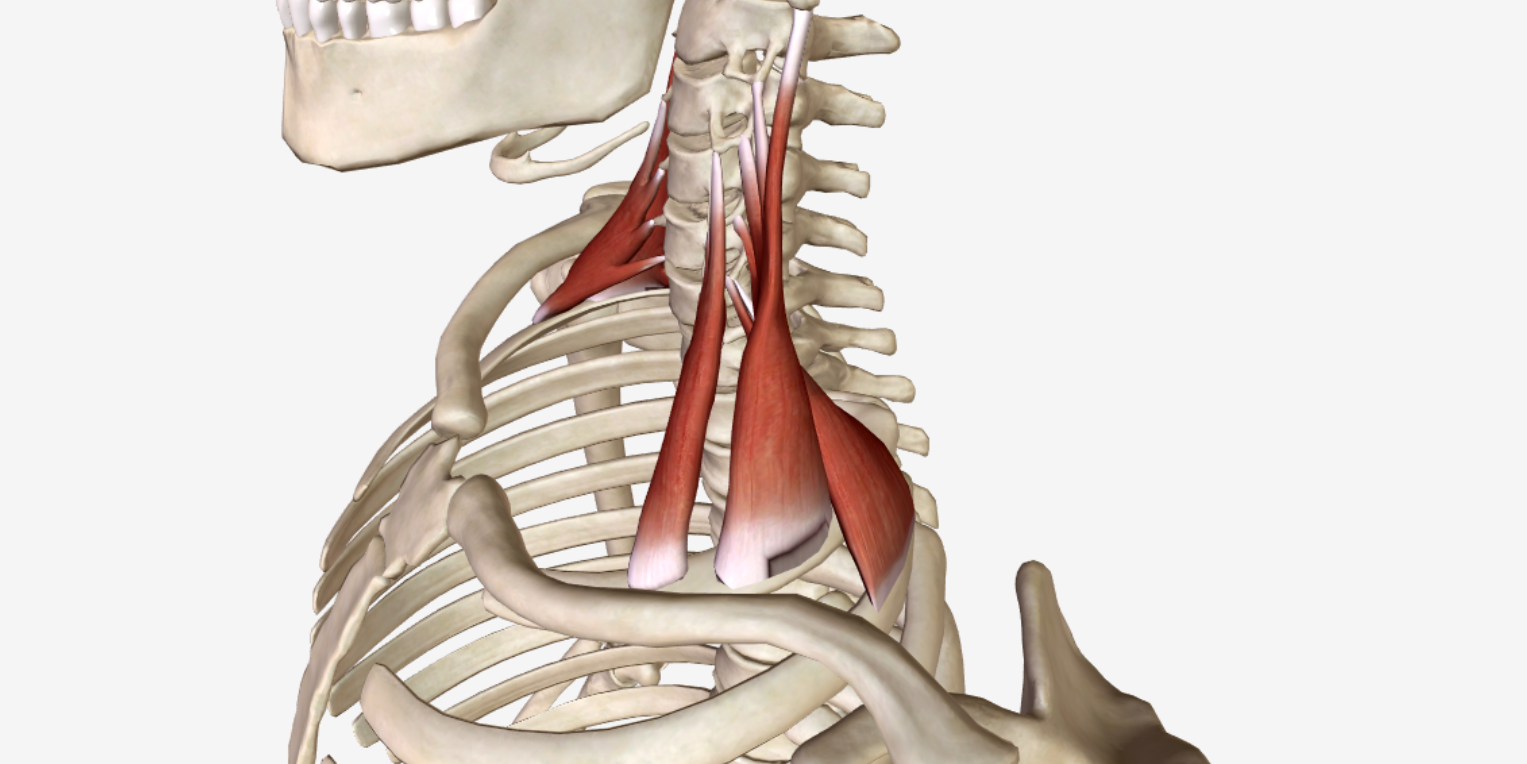Scaling the Scalenes
In the last blog post I talked about what your scalenes are and do. If you need a quick refresher, feel free to look back over that post, although really — all you need to remember is that your scalenes are the muscles on the sides of your neck that help flex your neck. In this post, I’m going to focus on some common injuries that can occur to your scalenes.
Obviously, anytime your head receives an acute traumatic impact, say from whiplash due to a car crash or a sporting injury, your neck muscles will also likely be damaged. Unlike bobbleheads, we’re not designed to be ferociously shaken, and a simple rule of thumb is that if your head is traveling at a rapid pace in a different direction from your shoulders, you’re gonna have some issues.
A more chronic and ongoing issue many people experience is Thoracic Outlet Syndrome. While that might sound like an awesomely bad 80’s sci-fi movie starring Tom Berenger as a misunderstood nuclear physicist, what it actually involves is the compression of the nerves, veins and arteries that pass from your lower neck to your arm (the brachial plexus/subclavian artery).
There are a variety of places and ways that this bundle of nerves and blood can become pinched — having TOS doesn’t necessarily mean you have something wrong in your scalenes, although it can be a good starting point to figure out what’s going on. Symptoms of TOS include numbness or tingling in the arm and hand; zingy, shooting pain down the arm/hand; weakness and fatigue in the arm/grip; or a lack of color or feeling in the fingers.
(Side note that I shouldn’t have to say but will say nevertheless: if your fingers ever become numb and discolored: go to a doctor immediately!)
Another common injury I see is the dreaded tech-neck (which, very much like the Dread Pirate Roberts, also takes no prisoners!). Tech-neck is sometimes called Upper Cross Syndrome, but whatever you call it the action is the same: because we are constantly tilting our heads forward to look at devices like computers and phones, our scalenes become shortened. Over time, they begin to think this shortened position is normal, which becomes extremely noticeable once you try and straighten your neck upright. What’s worse is that this learned behavior only compounds over time, and eventually the simple act of keeping your head upright becomes increasingly painful and challenging.
Dread Pirate Roberts takes no prisoners.
If thinking about all of these various problems has made you anxious, that’s a perfect segue to talking about anxiety. One of the useful services your scalenes provide is lifting your rib cage during forced breathing. (As breathing is generally associated with life, this is a nice little service your scalenes offer, and you should take a moment and thank them for their service.)
You may now find yourself wondering what forced breathing is. Anytime you need more oxygen — say during heavy exercise — your scalenes help your rib cage expand further than normal, diaphragmatic breathing, which allows you to take in more oxygen. A similar process occurs when you’re frightened or startled. (Think of the last time someone startled or surprised you, and you took a sharp breath in through the upper part of your chest.)
This type of breathing can become learned and habitual, and has two significant downsides: first, by trying try to breath up through your chest rather than with a full belly, you’re never expanding your full lung capacity and will always feel a bit short of breath. Second, this shallow, upper-chest breathing usually feels tight and restricted, and is exactly the sort of breathing that’s associated with anxiety. Learning to loosen and relax your scalenes is a great way to immediately calm your parasympathetic system, which will reduce anxiety and restore a greater sense of calm.
If you’ve had any injuries to your scalenes, or noticed that your breathing is restricted and tight, let me know about it in the Comments section below. I’ll discuss treatments to help offset and reduce neck pains in the next blog, and I’ll continue to put up related content via Instagram — see you there!



